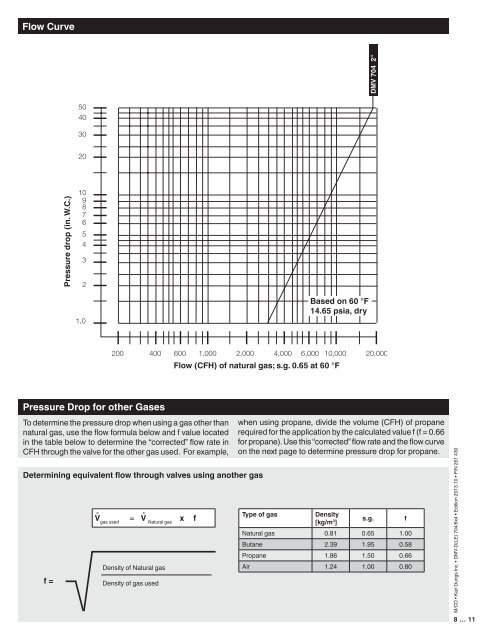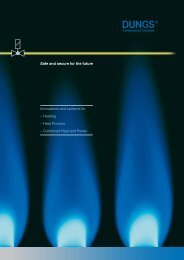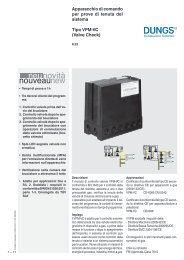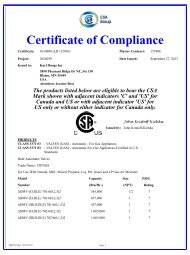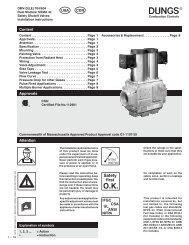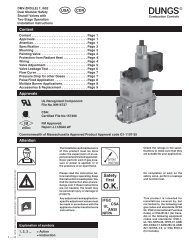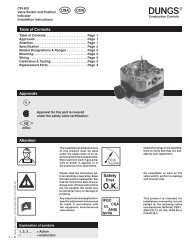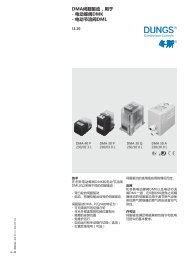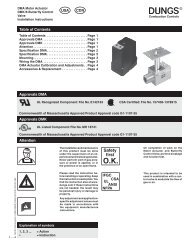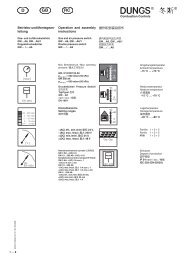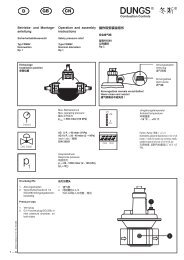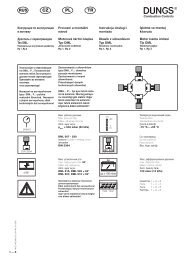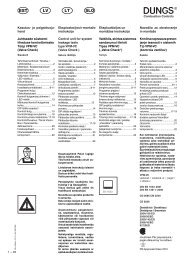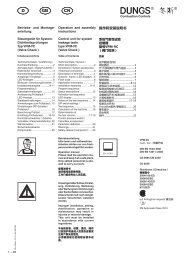Operation and assembly instruction (USA): 261430 ... - Dungs Mobile
Operation and assembly instruction (USA): 261430 ... - Dungs Mobile
Operation and assembly instruction (USA): 261430 ... - Dungs Mobile
You also want an ePaper? Increase the reach of your titles
YUMPU automatically turns print PDFs into web optimized ePapers that Google loves.
Flow Curve<br />
Pressure drop (in. W.C.)<br />
DMV 704 2“<br />
Based on 60 °F<br />
14.65 psia, dry<br />
Flow (CFH) of natural gas; s.g. 0.65 at 60 °F<br />
Pressure Drop for other Gases<br />
To determine the pressure drop when using a gas other than<br />
natural gas, use the flow formula below <strong>and</strong> f value located<br />
in the table below to determine the “corrected” flow rate in<br />
CFH through the valve for the other gas used. For example,<br />
Determining equivalent flow through valves using another gas<br />
f =<br />
° °<br />
V gas used<br />
= V Natural gas<br />
x f<br />
Density of Natural gas<br />
Density of gas used<br />
when using propane, divide the volume (CFH) of propane<br />
required for the application by the calculated value f (f = 0.66<br />
for propane). Use this “corrected” flow rate <strong>and</strong> the flow curve<br />
on the next page to determine pressure drop for propane.<br />
Type of gas<br />
Density<br />
[kg/m 3 ]<br />
s.g.<br />
Natural gas 0.81 0.65 1.00<br />
Butane 2.39 1.95 0.58<br />
Propane 1.86 1.50 0.66<br />
Air 1.24 1.00 0.80<br />
f<br />
M/CD • Karl <strong>Dungs</strong> Inc. • DMV-D(LE) 704/6x4 • Edition 2013.10 • P/N 261 430<br />
8 … 11


